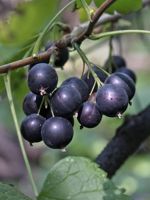Mon-Fri 9am - 5pm Mountain time
Ninebark vs Northern Black Currant
Physocarpus opulifolius
Ribes hudsonianum
CUSTOM GROW
CUSTOM GROW
Ninebark is a small, multi-stemmed shrub, that is used to add texture or colour to any yard.
It features flaky, cinnamon-brown bark, attractive white flowers, and long, maple-like leaves.
Northern Black Currant is a native deciduous shrub found across Canada and the northern United States. Dark purple to black berries that ripen in summer and provide food for wildlife and humans. Fragrant yellow-green flowers that attract a wide variety of pollinators.
This shrub is well adapted to moist soils and can even survive periods of flooding. It has an interesting bronze colour in fall.

